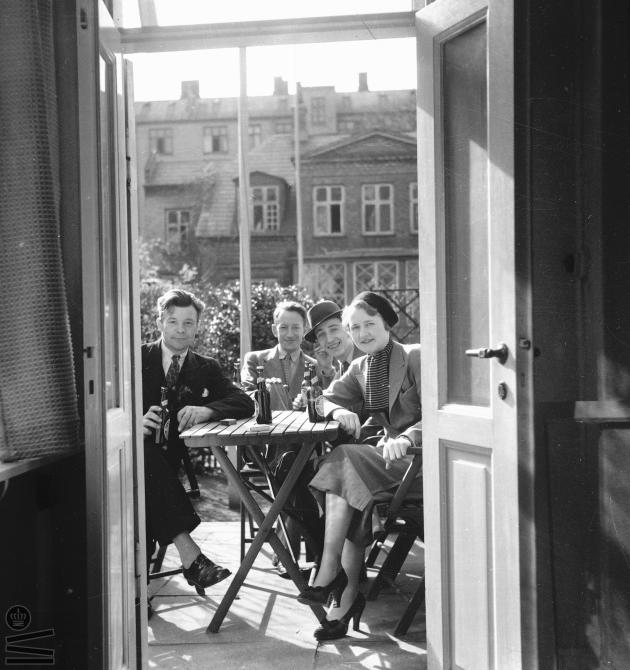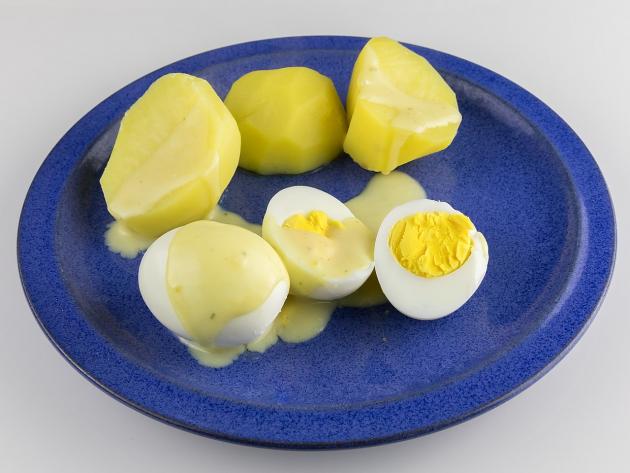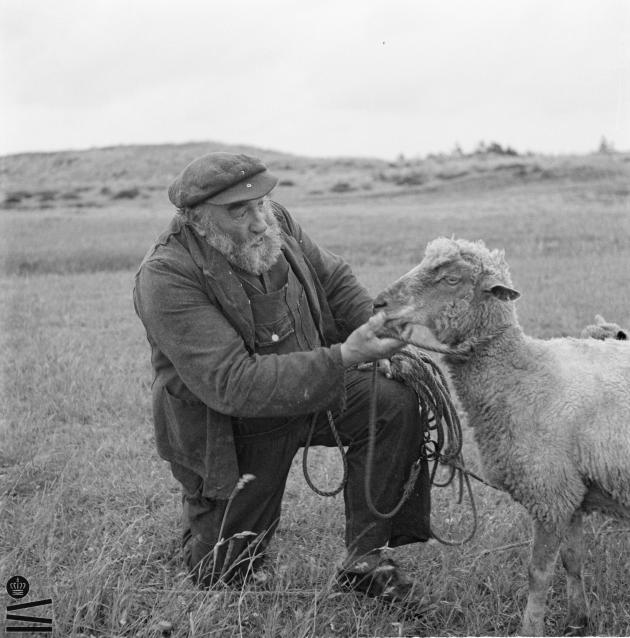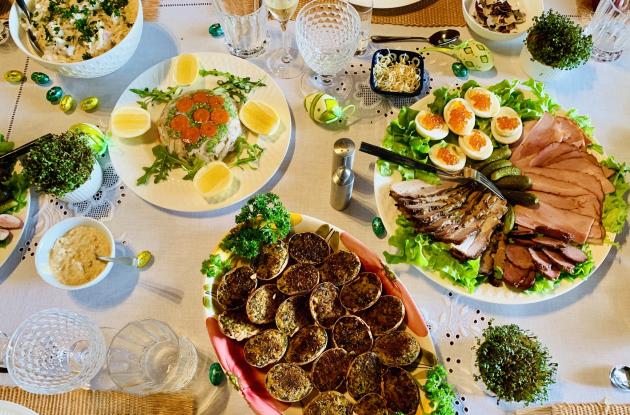Easter lunch
At Easter, we meet with family and friends around the table for the annual Easter lunch. But the classic Easter meal has not always been what it is today.

Photo: John E. Carrebye
Up until the middle of the 20th century, food moderation was observed in the days leading up to Easter, a period also known as Lent.
A spartan diet helped emphasise the seriousness of the first days of Easter. The festive meals did not begin until Easter Saturday and Sunday, when Jesus' resurrection was celebrated.
At many of today's Easter tables, it is not exactly moderation that is prevalent. On the contrary, the Easter holidays are often spent at luncheons with plenty of both food and drink.
Easter food has, to say the least, changed from the customs of the past. But many of the main components of the Easter lunch such as cabbage, eggs and lamb we still eat today, just in what many may call a tastier form.
To make a splash with cabbage soup
In Denmark's farming community, people ate cabbage or cabbage soup cooked on pork or mutton with seven or nine kinds of cabbage on Maundy Thursday.
Kale in particular can overwinter in Denmark, but if you could not get nine kinds of cabbage, you had to add another kind of green. Cabbage soup was eaten for health. It was a nutritious meal that ensured health in the coming year.
For us today, cabbage soup may not seem so festive, but it has meant a lot for people to make a splash among friends and family with many kinds of cabbage.
In Southern Jutland, there is still a tradition of making the so-called "Seven Soup" with seven different kinds of cabbage for Easter.

Photo: Raimond Spekking
"Dirty eggs" on Easter day
During Lent (the time just before Easter), one was not allowed to eat eggs. When Lent ended on Easter Sunday, it was celebrated, among other things, by eating eggs - preferably many more than you were used to.
In Danish homes, it was a tradition to eat the so-called "dirty eggs" or "shit eggs" (hard-boiled eggs in mustard sauce) for Saturday's big Easter dinner. From ancient times, Saturday has been called Shit Saturday, because this day the people removed dirt and grime and cleaned and washed, so it is probably from there the dish "dirty eggs" has its name.
However, the traditional Easter meal, eggs, is still often included as part of the content of the Easter lunch, just as another of the symbols of Easter, the lamb, is eaten in a number of homes during the Easter holidays.

Photo: Jonals Co.
New Zealand lamb chops on the Easter table
When lamb chops are a traditional Easter meal, and when small white lambs are part of the Easter decoration, it is connected with, among other things, the Bible's mention of Jesus as “the Lamb of God” and the arrival of lamb kids in the late spring, which could contribute to some good lamb chops on the Easter table.
In the past, the Danish farmer kept sheep because they had to produce some good wool and skins. The species that lamb in the spring were kept, and as spring in the Nordic countries comes a little later than in the south, the lambs had not yet been ready for slaughter at Easter time.
When many older people today have memories of lambs that tasted of wool, it has probably been an older lamb or a sheep they have eaten.
With the introduction of the freezer in Danish homes in the 1950s, we were able to store imported lambs from New Zealand and Australia, where the sheep lamb in the autumn, and then lamb roasts, as we know them today, began to appear on the Easter table.
